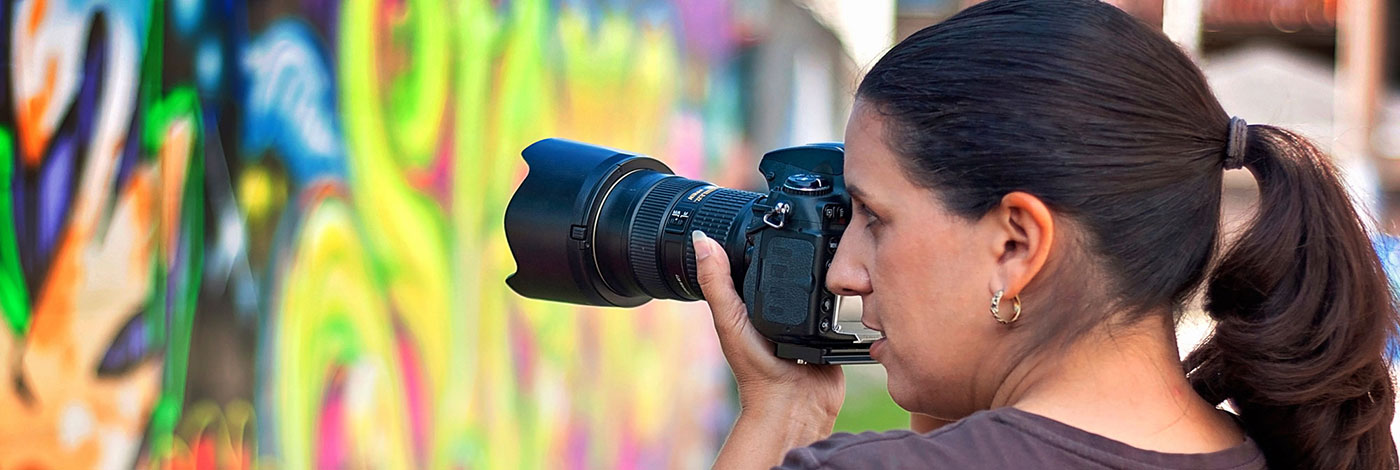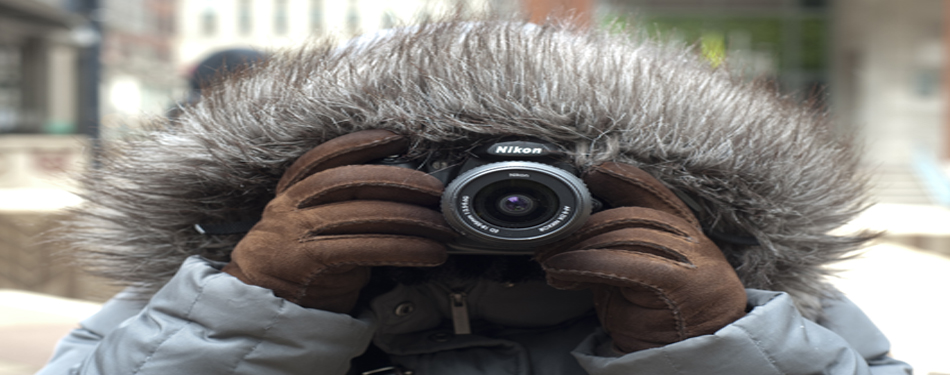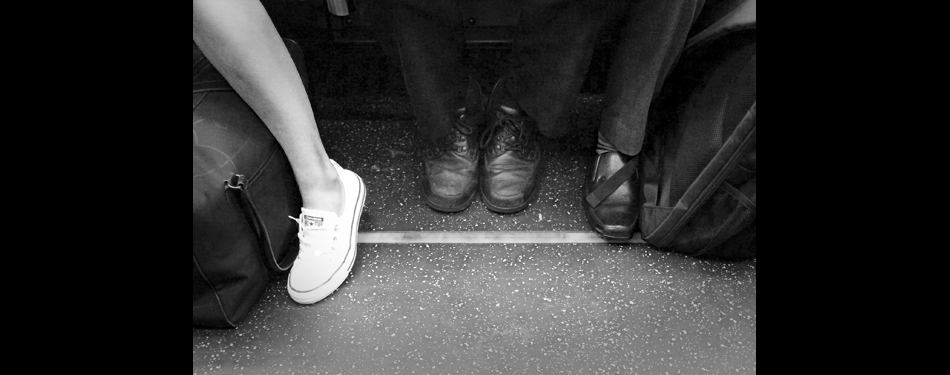As the Northern Hemisphere enters its fourth Winter or second Summer, let’s talk about Chicago’s weather from a local photographer’s perspective. Don’t worry, I’m not a meteorologist and there won’t be any technical terminology…only what it’s like to live and photograph here. I’ve also added some “pro tips” better described as my learned experiences and observations, so you may want to bookmark this page.
Chicago is the third largest city in the United States, nestled in the Midwest and bumped up against Lake Michigan to our East. We tend to ride on the weather current that ribbons from Vancouver to Calgary to Minneapolis, MN to Chicago. This is significant because, as it shifts North or South of us, we either miss or take a direct hit on whatever weather it carries. Alternately, Chicago experiences the wild ride that is living next to a large body of water to our East and, depending on the wind direction, can increase humidity and/or wind that carries either an icy chill or a bit of relief from the heat. Still with me?
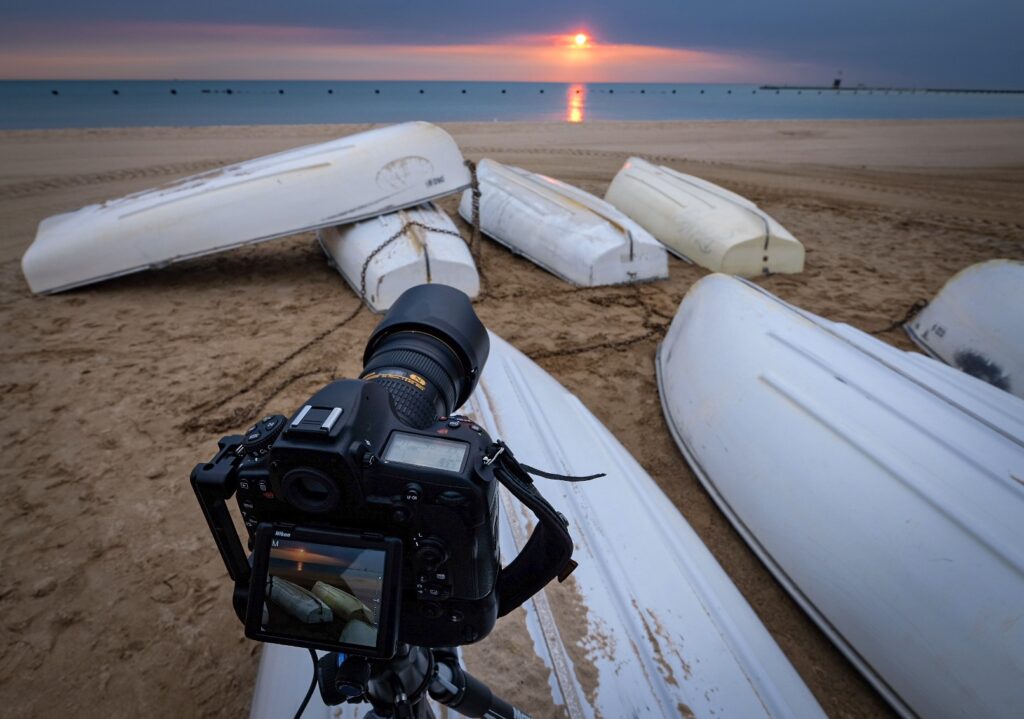
Here is why all of that matters to a photographer:
CHICAGO LAKEFRONT VS EVERYWHERE ELSE
If you’re planning to take photos along the lakefront, you’ll need to dress differently than if you’re planning to be five miles west and, different still if you’re going to be in the suburbs (nicknamed “Chicagoland area”). Why? The lakefront is cooler in the Summer and “warmer” in Winter, sometimes as much as 5-10 degrees.
Pro Tip #1: When checking the weather forecast, temperature won’t give you the complete story. Always check and dress according to the “Feels Like” temperature – in Winter, this can be “wind chill” and in Summer “heat index”.
Pro Tip #2: Layers are your best friend!
THE WIND WILL MAKE OR BREAK YOU
Seriously, it will.
Sidebar: As a tour guide, I should inform you Chicago isn’t known as “The Windy City” because of the wind. That it can also be windy is just the bonus.
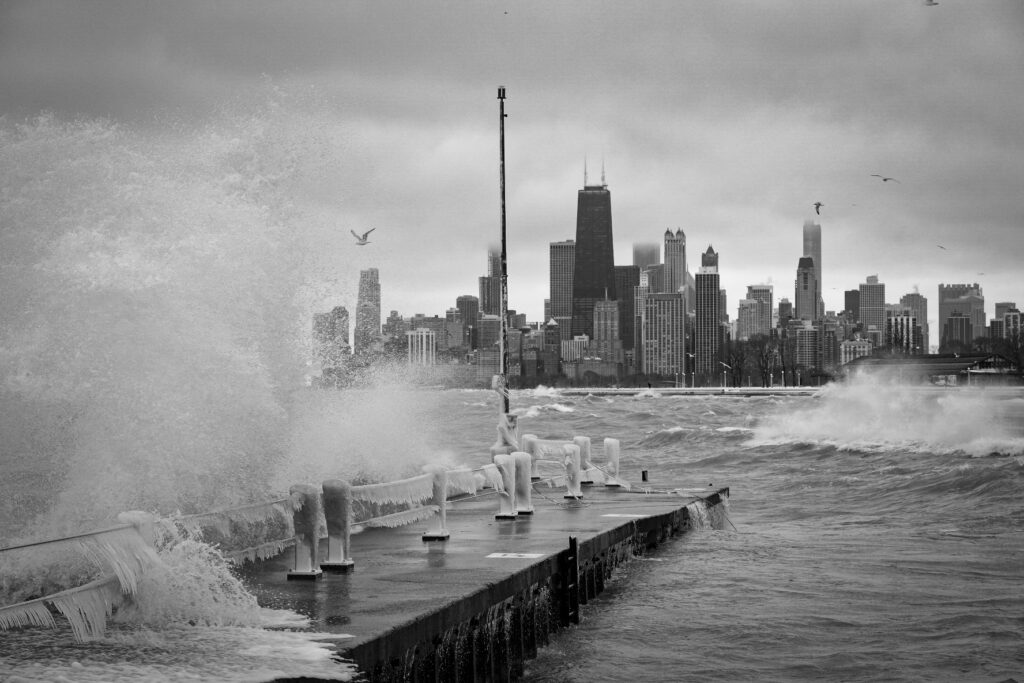
CAMERA GEAR CONSIDERATIONS: Is it on your agenda to photograph the lakefront or light trails? Or maybe you intend to elevate for a dinner perspective. If we’re anticipating anything stronger than, let’s say, 15 mph winds, you’re going to want more stability than a lightweight travel tripod. (NOTE: Tripods are not allowed to be used on train station property. Please don’t ruin that location for the rest of us!) If you have no tripod or really can’t bring the heftier tripod, search for a solid platform as a substitute.
Pro Tip #1: Today’s newer cameras more commonly have built-in stabilization / vibration reduction. Learn how to disable/enable it. The usual practice is to turn it off when on tripod, but a good strong Chicago wind might have you second-guessing that practice.
Pro Tip #2: Nearly everyone forgets about their camera strap or remote shutter cord when using a tripod in the wind. Keep in mind, everything attached to the camera will cause shake! I’m not recommending removing the camera strap, especially at the lake or an elevated spot, but I do suggest securing it in some way to lessen the movement.
WINTER: Let me answer the most common question I hear about Chicago weather: Are the winters as brutal as its reputation claims? It depends on whether it’s a La Niña or El Niño season. if we’re going to have a brutal Winter, the coldest and most snowy months will usually January and February. The rest of Winter is, well, just Winter…a great opportunity for B&W (but shoot in color to capture all the data!)

Think you’ve dressed warm enough for a Winter outing but fought the urge to wear a scarf…or hat…or gloves? When that humid, cold wind whips across the lake and smacks you in the face, permeating your bone marrow, your photo outing is likely going to be short-lived.
Pro Tip #1: After years and a lot of money spent figuring out what works, I always recommend this combination in the Winter: moisture-wicking base layer, insulating layer(s), windproof or wind-resistant outer layer and, of course, cover head, neck and hands.
Pro Tip #2: The direction of the wind in a weather forecast is the direction it’s coming from. A SW wind means it will feel warmer in the city (think Arizona direction) than a NE wind (as it sweeps across the lake before reaching land).
Not to be all bad news, windy days can also make for fun street photos! Flags are blowing. Winter wind causes people to retract like turtles and wear grimace on their faces. The desire to use an umbrella during a windy rain adds story (sorry, person that hoped to remain dry). There are opportunities for interesting photos practically anywhere if you practice keen observation.
THE PREDICTABLE IS UNPREDICTABLE
The forecast says it will rain tomorrow, but is that at the Wisconsin border, the Indiana border, Chicagoland, or is it on the South side or North side of the city, or even the lakefront? Keep in mind, Chicago weather forecasts cover the entire area. I have personally experienced a thunderstorm at my location while a colleague saw sun without precipitation…two city neighborhoods away! Remember the weather current thing? Remember the battle between the weather current and Lake Michigan?
The central downtown Chicago area has all these forces swirling around the skyscrapers, and that can often mean we miss forecasted weather…or not. Lesson learned: Never discount that a shelf cloud might lift and produce an amazing sunset (especially during Chicagohenge. More on that in the next article.)
MORE DRAMATIC PHOTOS
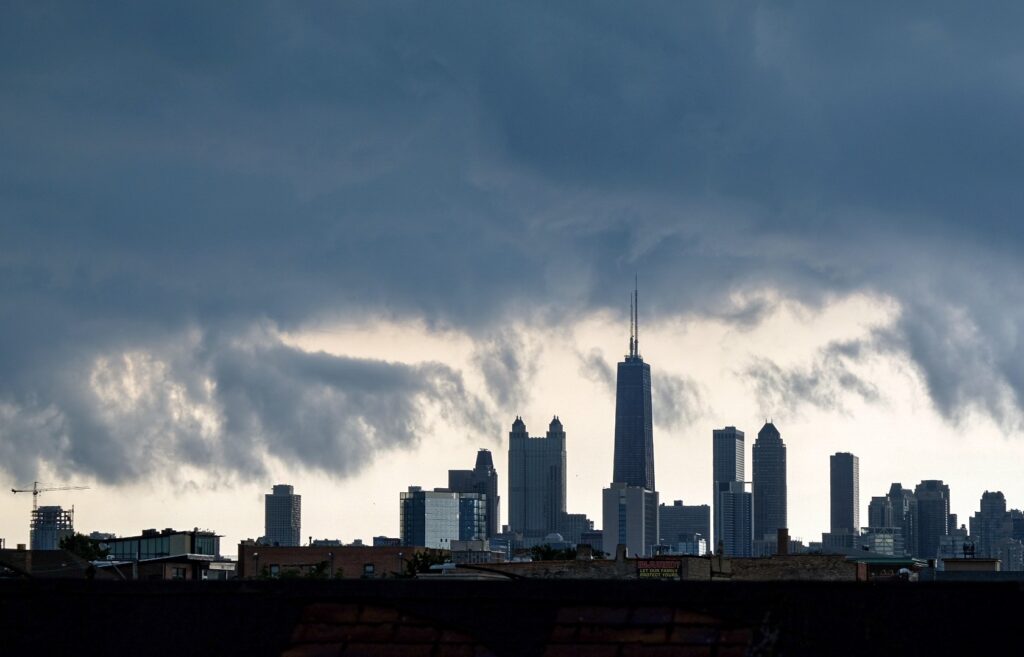
Being in the middle of the country, anything that pushes or pulls through our area can offer dramatic photo opportunities. Remember the unpredictability? Case in point, two days ago, we broke an all-time record for that date in May with a 95ºF, and 48 hours later, it feels like 35-40ºF. In between, we experienced an apocalyptic sky as a July-type thunderstorm moved through, followed the next day by Chicago’s first ever dust storm.
Another example was when the Canadian Rockies were experiencing the terrible wildfires a few years ago, it was bittersweet that Chicago experienced stunning sunrises and sunsets from the smoke that weather current carried our way.
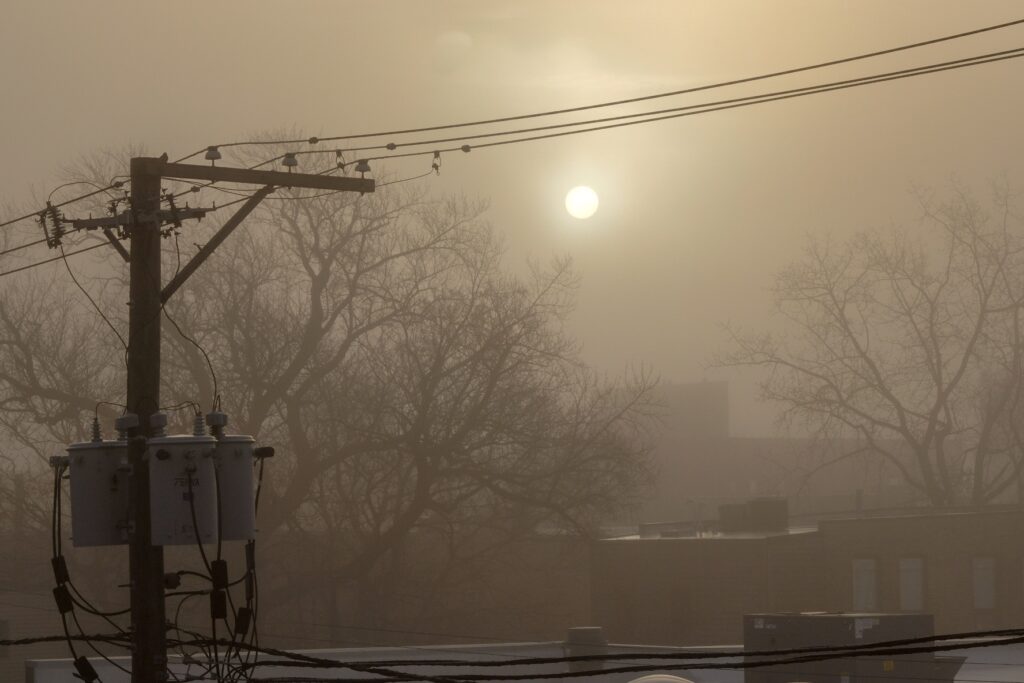
On occasion, we experience a low fog as winter and summer battle for the W (referencing the Chicago Cubs ‘Fly the W’ winning games). The fog blankets the city for a brief period or weaves through the skyline. It’s fun to photograph the skyline fading into the fog or try going up to an observatory and see if the tops of any skyscrapers peek out above the fog layer. I’ve also seen more rainbows here than anywhere I’ve lived.
If you can handle sticking it out during inclement weather, you will capture some of your favorite photos!
Note of Caution: I know some of you live where lightning and thunderstorms don’t happen and photographing one might be attractive. If you decide to do this, please be careful. Lightning is high voltage and not to be challenged! If you cover your camera with something black to shoot through windows without reflection, you could more safely experience this inside 360 Observatory at 875 N Michigan Ave.
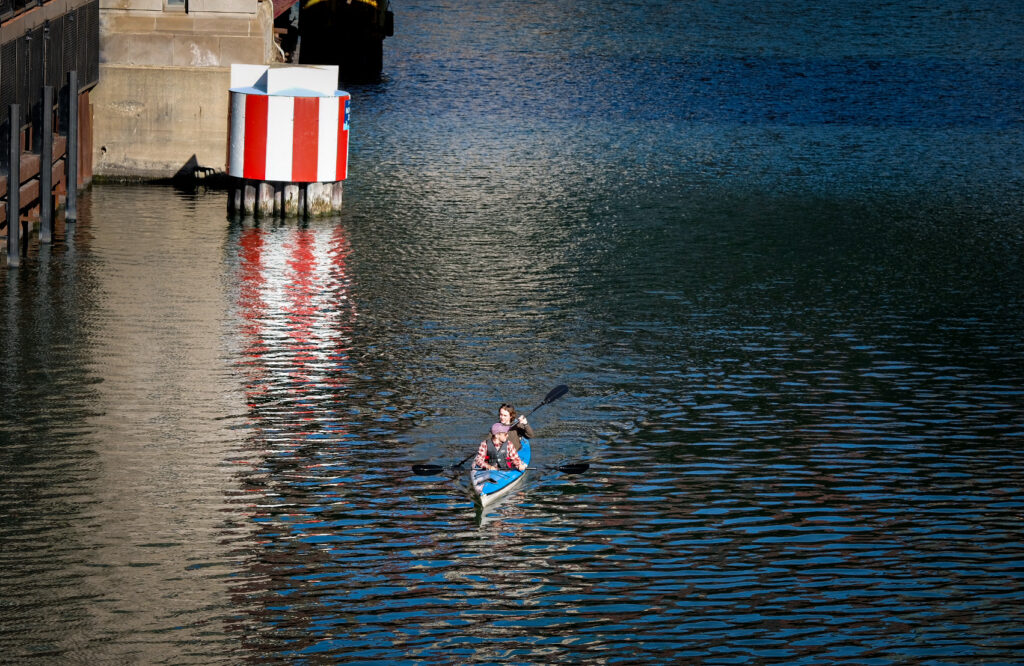
Now that you have a better understanding of our weather and how to prepare for it, it’s time to get out there. The next article will provide some seasonal photo opportunities. Open your calendar and get ready!
